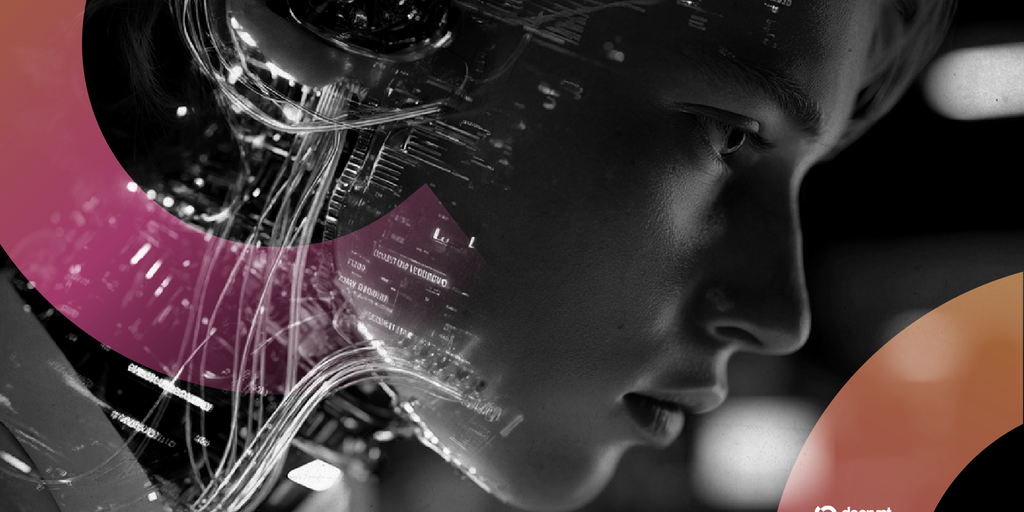
The Internet is evolving rapidly, but not in the way many had originally envisioned. With the rise in AI-generated content, bots, and automated systems dominating digital platforms, many are beginning to wonder if the internet as we know it is becoming less human. This transformation has given traction to the ‘Dead Internet Theory,’ a concept proposing that much of the online world is now synthetic, driven by machines instead of humans.
What is the Dead Internet Theory?
First surfacing on niche online forums such as 4Chan and Agora Road’s Macintosh Café, the Dead Internet Theory posits that a significant portion of web content is generated by automated bots and AI systems. While conspiracy theories initially fueled the concept, recent advancements in generative AI have made the theory increasingly plausible. In 2024, for the first time, bot traffic overtook human web activity, accounting for 51% of all internet interactions, according to Imperva’s Bad Bot Report.
A Growing Flood of AI-Generated Material
AI tools are now feeding and reshaping the web. As platforms like Reddit, YouTube, and X (formerly Twitter) experience spikes in synthetic and repetitive content, users are beginning to notice. Analysts estimate that automated systems generate around 40%-60% of today’s web traffic, creating the illusion of extensive human interaction.
A January 2025 report from analytics firm Graphite revealed that AI writing tools had, for the first time, generated more content than human writers. Chatbots now summarize and remix their own output, creating ways for internet users to consume machine-updated information while being largely unaware of its artificial origins.
How Bots Impact Online Communities
Researchers like sociologist Alex Turvy argue that bots are not necessarily making the internet ‘dead’ but are restructuring how we experience it. This shift has driven many users to seek the authenticity of private online environments such as Discord servers and gated communities. “When usual cues stop working, people look for spaces where they feel more secure about who they’re interacting with,” Turvy explains.
Unfortunately, this retreat to private communities has left the public internet feeling quieter and less genuine, even though human activity online hasn’t necessarily decreased. The incentives for platforms to allow bot-driven engagement remain high since non-human activity inflates metrics like likes, shares, and comments—essential for ad revenue and growth.
AI Agents: The New Face of the Internet
Rather than just bots spamming comments or manipulating traffic statistics, AI is now being trained as autonomous agents capable of executing tasks like browsing, purchasing, and even trading cryptocurrencies. These agents mimic human behavior so well that CAPTCHAs, two-factor authentication, and other safeguards sometimes fail to detect them.
For instance, analytics firm Menlo Ventures recently reported that platforms like Instagram and X were seeing record-high bot activity. On Instagram, approximately 9.5% of accounts (around 95 million) were determined to be fake or automated.
The Financial Incentives Behind AI Dominance
Why does this matter? Simply put: economics. It’s cheaper and faster for AI algorithms to generate content, drive engagement, and entice users to stay logged in, creating an environment where synthetic content drives the majority of digital interactions. Venture capitalist Deedy Das explains that most of the internet’s plumbing was designed on the assumption that interactions were human. “Now, software imitates human behavior perfectly, enabling automated systems to take over much of the activity online,” he says.
Corporate giants are also taking action. Recently, Amazon issued a cease-and-desist to Perplexity AI’s Comet browser after discovering it was using automated bots disguised as human shoppers to make purchases. Similar reports have emerged of AI-driven systems tricking platforms into believing they’re genuine users, not to mention the evolving risk of AI-enabled cyberattacks.
What Does the Future Hold?
As the internet grows increasingly ‘automated,’ there is an emerging need to verify personhood. Blockchain projects like Worldcoin and Proof of Personhood offer potential solutions by tying online activity to verified humans, rewarding authentic content creators while discouraging fake engagement.
Another suggestion is to reward real human-generated content and make bot-driven fraud prohibitively expensive. As this trend continues, it’s critical for platforms and individuals to invest in technologies that promote authenticity and transparency in the digital space.
Take Action for a More Authentic Internet
If you’re looking for tools to help navigate the increasingly synthetic online world, consider using an advanced content analysis app or browser extension, such as Grammarly, which can help you identify AI-generated text and ensure high-quality human interaction. These small steps can go a long way in maintaining a genuine digital experience.
As the Dead Internet Theory highlights, the internet may not be ‘dead,’ but it’s certainly changing. The challenge now is ensuring that this evolution benefits human users and preserves the authenticity and originality that defined the web in its early days.

